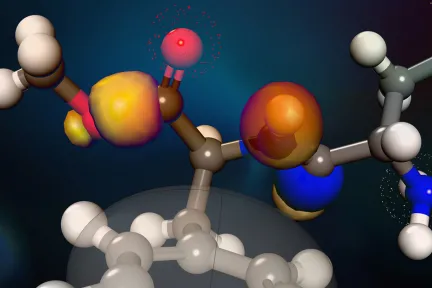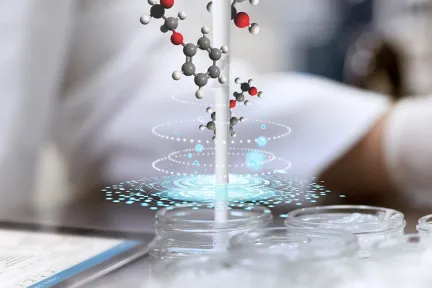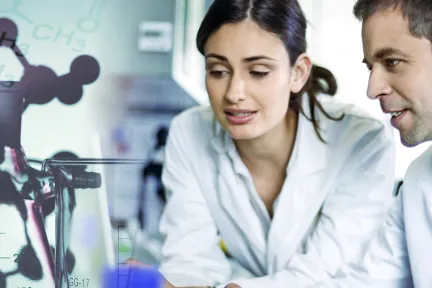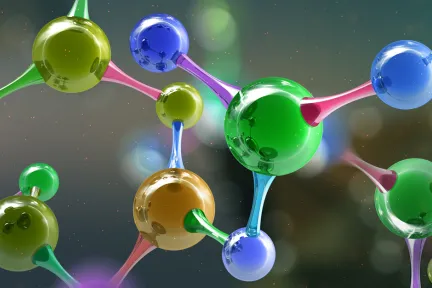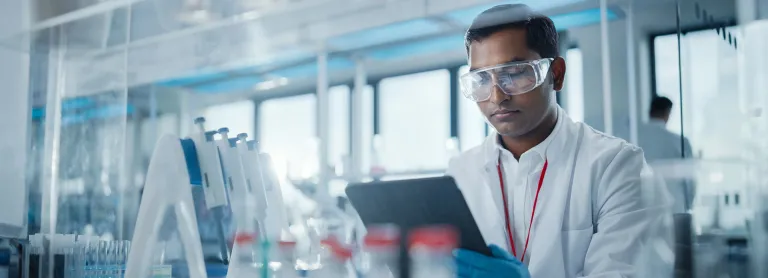Materials Science & Engineering
Foster Innovation with In Silico Design
Connect the Virtual and Real Worlds of Materials Innovation
Declining R&D productivity is forcing organizations to think outside the box to keep up with increasing consumer demands. Relying on physical experimentation alone is not economically sustainable in such a climate. Researchers need to facilitate a deeper understanding of both how and why their products work to better tie them to project and business goals.
Modeling & Simulation provides a snapshot of the fundamental atomic interactions supporting product performance. In silico testing allows researchers to test concepts with minimum risk and lower costs, unlocking new avenues of ideas to explore. By tying the virtual and real worlds together, researchers can better guide their projects with virtual tests guiding physical ones and vice-versa. As a result, teams are able to create better performing, safer and cost-effective products, leading to improved patient outcomes.
BIOVIA Materials Science & Engineering Key Benefits
Accelerate Materials Innovation
Conduct multi scale multi physics modeling and simulation
Reduce R&D Costs
Investigate and test hypotheses in silico prior to costly experiments
Improve Formulation Performance
Design safer, healthier and better formulated products
Foster Data-Driven Decisions
Gain deep insights leveraging AI and machine learning
Discover Our Material Science & Engineering Portfolio
Explore our range of Material Science & Engineering solutions in our Portfolio:
A SaaS Cloud Solution
BIOVIA Materials Science & Engineering solutions are available on the 3DEXPERIENCE platform to help enhance collaboration and provide a single environment for all scientific data and innovation.
Key Benefits:
- A unified data model that can be accessed by other BIOVIA and Dassault Systèmes solutions
- A cloud-native solution, deployed on data centers around the globe for sovereign data control
- Seamless workflows which reduce non-value added tasks
- Integrated collaborative tools and cloud data storage for centralized knowledge management
Explore BIOVIA Materials Science & Engineering Solutions Related to Your Professional Role
BIOVIA Materials Science & Engineering solutions are packaged as Roles to get you up to speed faster and work more efficiently with all needed applications available at your fingertips. Select a package that corresponds to your role in an organization.
By leveraging BIOVIA modelling and simulation tools, Nippon Shokubai researchers have been able to expedite product development and improve process efficiency significantly.
Start Your Journey
The world of Materials Science & Engineering changing. Discover how to stay a step ahead with BIOVIA
FAQ About Materials Science & Engineering Software
Material engineers use a variety of specialized tools and software to innovate and enhance material properties. BIOVIA Materials Science & Engineering is a comprehensive suite designed for simulation, modeling, and analysis in materials science. Here are some of the key tools and resources they typically utilize:
- Computational Software: Tools like BIOVIA Materials Studio are central to the work of materials engineers in this field. These software packages allow for the modeling and simulation of materials to understand and predict their properties and behaviors under various conditions.
- Databases: Extensive databases containing information on material properties, chemical processes, and experimental results are crucial. These databases support research and development by providing a wealth of data that can be used for comparison and validation.
- Visualization Tools: Sophisticated visualization software helps in interpreting complex data sets and molecular models, making it easier to analyze the structure and properties of materials at an atomic or molecular level.
- High-Performance Computing (HPC): Computational studies in materials science often require significant processing power. HPC facilities are used to perform large-scale simulations and calculations that are computationally intensive.
- Laboratory Equipment: While much of the work in BIOVIA revolves around simulation, real-world testing and validation are critical. Material engineers use various laboratory instruments to synthesize materials and test their properties physically.
- Collaboration Platforms: Given the interdisciplinary nature of materials science, engineers often work within teams that might be distributed globally. Tools that facilitate collaboration and data sharing are essential.
- Linear Analysis: Linear analysis evaluates structures under static and dynamic loads, ensuring they can withstand prescribed forces and maintain stability across industries.
- Nonlinear Analysis: Nonlinear analysis addresses complex scenarios where linear assumptions fail, offering solutions for significant deformations, nonlinear material properties, and contact-related issues.
- Aeroelastic Flutter: Aeroelastic flutter, caused by airflow-induced oscillations, poses a risk to aircraft stability. Advanced tools help predict and prevent flutter problems, ensuring aircraft safety in aerospace design.
Also Discover
Learn What BIOVIA Can Do for You
Speak with a BIOVIA expert to learn how our solutions enable seamless collaboration and sustainable innovation at organizations of every size.
Get Started
Courses and classes are available for students, academia, professionals and companies. Find the right BIOVIA training for you.
Get Help
Find information on software & hardware certification, software downloads, user documentation, support contact and services offering

